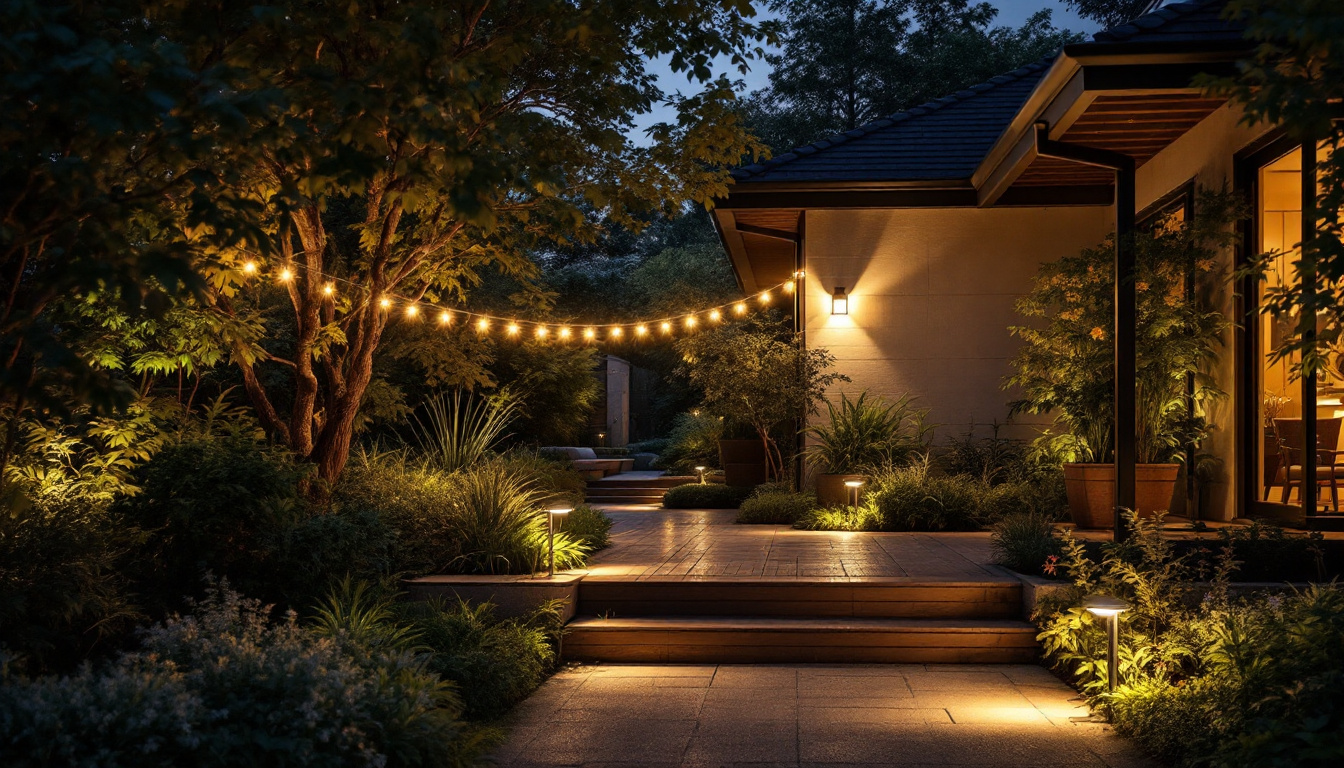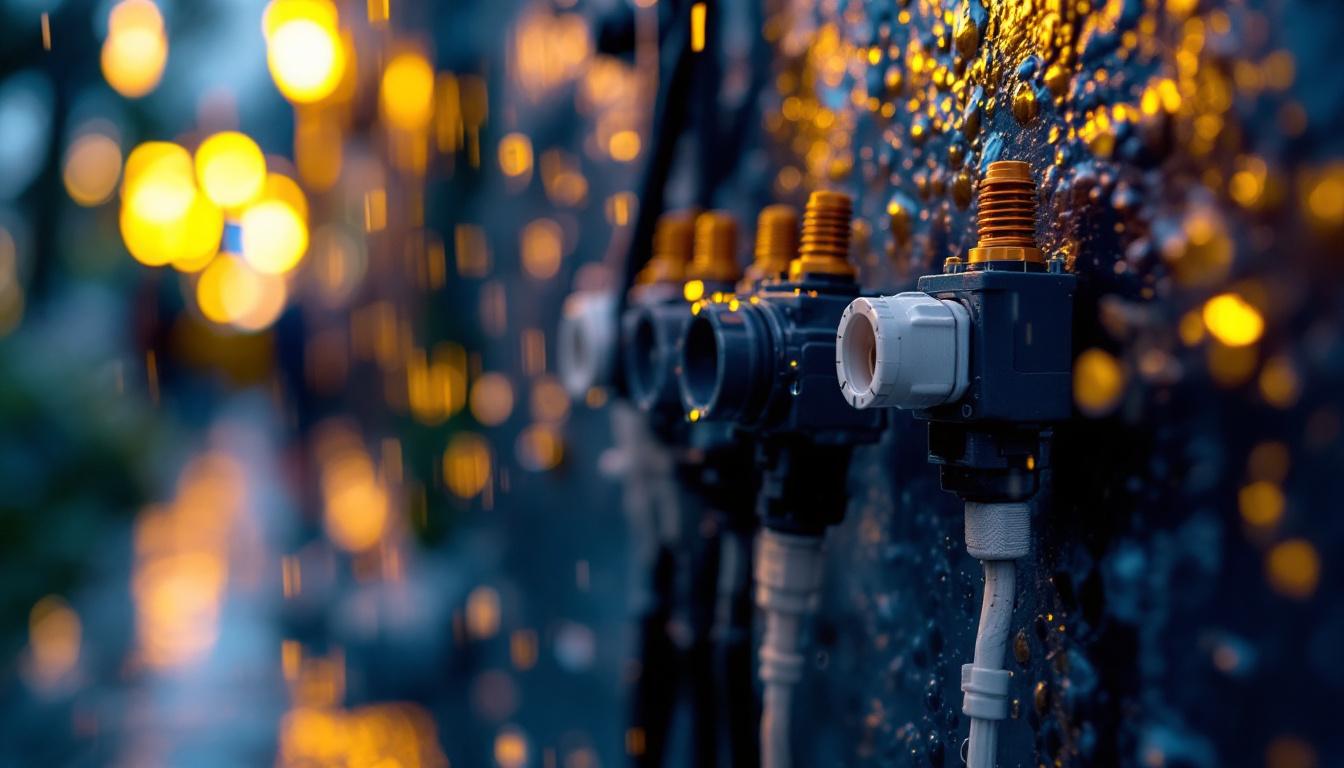
Motion activated outdoor lighting has become an essential feature for many residential and commercial properties. These systems not only enhance security but also provide convenience and energy efficiency. As lighting contractors, understanding the advantages and disadvantages of motion-activated lights compared to alternative solutions is crucial for making informed recommendations to clients.
This article delves into the benefits of motion activated outdoor lighting, explores alternative options, and provides insights on what lighting contractors should consider when making their selections.
One of the primary benefits of motion activated lighting is its ability to deter potential intruders. The sudden illumination triggered by movement can startle trespassers and draw attention, making properties less appealing targets for theft or vandalism. Additionally, these lights can be strategically placed to cover blind spots around the property, ensuring comprehensive surveillance. Beyond security, these systems also offer practical advantages for homeowners, such as illuminating pathways and entryways when someone approaches, thereby reducing the risk of accidents during nighttime hours.
Moreover, advancements in technology have led to the development of smart motion-activated lights that can be integrated with home automation systems. These innovative solutions allow homeowners to control their outdoor lighting remotely via smartphones or tablets, enabling them to monitor their property in real-time. Some models even feature customizable settings, allowing users to adjust sensitivity levels and light duration based on their specific needs. This level of control not only enhances security but also contributes to energy savings, as lights only activate when necessary, reducing unnecessary electricity consumption.
Motion activated outdoor lighting is designed to turn on automatically when it detects movement within a specified range. This technology typically employs passive infrared sensors or microwave sensors to detect motion, making it a popular choice for homeowners and businesses alike.
These lighting systems can be installed in various outdoor areas, including driveways, walkways, gardens, and entryways. The primary purpose is to enhance safety and security by illuminating dark areas, deterring potential intruders, and providing visibility for residents and visitors. In addition to safety, these lights can also serve aesthetic purposes, highlighting landscaping features and architectural elements of a home or business, creating a welcoming atmosphere during the evening hours.
One of the most significant advantages of motion activated outdoor lighting is its energy efficiency. Unlike traditional lighting systems that remain on throughout the night, motion sensors ensure that lights are only activated when necessary. This not only conserves energy but also reduces electricity costs for clients. Many models now come with adjustable sensitivity settings and timers, allowing users to customize how long the lights stay on after activation, further enhancing energy savings.
Additionally, the convenience offered by these systems cannot be overstated. Homeowners and businesses can enjoy peace of mind knowing that their outdoor spaces are well-lit whenever someone approaches. This feature is particularly beneficial for properties with large yards or multiple entry points, where visibility can be a concern. Moreover, some advanced systems are equipped with smart technology, enabling users to control the lights remotely via smartphone apps, providing even greater flexibility and control over outdoor lighting.
Security is a primary concern for many property owners, and motion activated outdoor lighting plays a vital role in enhancing safety. By illuminating dark areas, these lights can deter potential intruders, making properties less appealing targets. The sudden activation of lights can startle intruders, giving property owners a crucial advantage. Additionally, the presence of well-placed motion lights can create a psychological barrier, as criminals often seek out homes that appear unprotected or poorly lit.
Furthermore, many modern motion activated lighting systems can be integrated with security cameras and alarm systems, providing a comprehensive security solution. This integration allows for real-time monitoring and alerts, ensuring that property owners are always aware of any unusual activity. Some systems even feature two-way audio capabilities, allowing homeowners to communicate with visitors or potential intruders directly through their security setup. This level of interaction can further enhance security and provide an added layer of protection, making it an invaluable tool for safeguarding properties.
While motion activated outdoor lighting offers numerous benefits, it is essential to consider alternative lighting solutions that may also meet the needs of clients. Each option has its unique advantages and disadvantages, which can influence a contractor’s recommendation.
Traditional outdoor lighting systems, such as floodlights and pathway lights, provide constant illumination. These systems can be beneficial for areas that require consistent lighting, such as driveways and walkways. However, they can lead to higher energy consumption and costs, as they remain on throughout the night.
Moreover, traditional lighting may not provide the same level of security as motion activated systems. While they can illuminate areas, they do not have the added deterrent effect that motion sensors provide. Contractors should weigh the importance of constant visibility against energy efficiency when discussing options with clients.
Smart lighting systems have gained popularity in recent years, offering homeowners the ability to control their outdoor lighting remotely through smartphone apps. These systems can include features such as scheduling, dimming, and color changes, providing a level of customization that traditional and motion activated systems may lack.
While smart lighting can be a compelling option, it often requires a more complex installation and may come with a higher price tag. Additionally, the reliance on Wi-Fi connectivity can pose challenges in areas with weak signals or during power outages. Contractors should assess the technological comfort level of their clients before recommending smart lighting solutions.
Solar-powered outdoor lighting is an eco-friendly alternative that harnesses solar energy to power lights. These systems are particularly appealing for clients looking to reduce their carbon footprint and energy costs. Solar lights are easy to install, as they do not require wiring, making them a convenient option for many properties.
However, solar-powered lights may not provide the same brightness or reliability as traditional or motion activated systems, especially in areas with limited sunlight. Contractors should consider the specific location and climate conditions when discussing solar options with clients.
When advising clients on outdoor lighting options, several factors should be taken into account to ensure the best choice for their specific needs. Understanding these factors will enable lighting contractors to provide tailored solutions that meet client expectations.
The size and layout of a property play a significant role in determining the most suitable lighting solution. Larger properties may benefit from a combination of motion activated lights and traditional lighting to ensure adequate coverage. In contrast, smaller properties might find that motion activated lights alone suffice for their needs.
Additionally, the layout of pathways, entry points, and gardens should be carefully considered. Contractors should assess which areas require more illumination and where motion sensors would be most effective.
Understanding the lifestyle and preferences of clients is crucial when recommending outdoor lighting solutions. For instance, homeowners with pets or frequent visitors may prefer motion activated lighting for convenience and security. Conversely, clients who prioritize aesthetics might lean towards smart or traditional lighting options that offer more design flexibility.
Engaging in open discussions with clients about their needs and preferences will help contractors provide tailored recommendations that align with their expectations.
Budget constraints are often a significant factor influencing lighting choices. Motion activated outdoor lighting systems can vary widely in price, depending on the brand, features, and installation complexity. Contractors should provide clients with a range of options that fit within their budget while still meeting their functional and aesthetic needs.
It is also essential to discuss the long-term cost implications of each option. While motion activated lights may have a higher upfront cost, their energy efficiency can lead to significant savings over time. Educating clients about these factors can help them make informed decisions.
Proper installation and maintenance are critical to the performance and longevity of outdoor lighting systems. Lighting contractors must ensure that they are well-versed in the installation processes for various lighting solutions and can provide clients with guidance on maintenance practices.
When installing motion activated outdoor lighting, contractors should ensure that sensors are positioned correctly to maximize their effectiveness. This includes placing sensors at an appropriate height and angle to detect movement accurately. Additionally, considering the coverage area is essential to avoid blind spots.
For traditional and solar-powered lighting, proper placement is also crucial. Pathway lights should be spaced evenly to provide consistent illumination, while floodlights should be directed towards areas that require the most light. Following best practices during installation will enhance the overall performance of the lighting system.
Regular maintenance is essential for ensuring the longevity of outdoor lighting systems. Motion activated lights may require periodic testing to ensure that sensors are functioning correctly. Dust and debris can obstruct sensors, leading to reduced performance, so cleaning should be part of routine maintenance.
For traditional and solar-powered lights, checking for burnt-out bulbs and ensuring that solar panels are free from obstructions will help maintain optimal performance. Educating clients about maintenance practices will empower them to take care of their outdoor lighting systems effectively.
In conclusion, motion activated outdoor lighting offers numerous benefits, including energy efficiency, enhanced security, and convenience. However, lighting contractors must also consider alternative solutions such as traditional lighting, smart lighting, and solar-powered options to provide clients with comprehensive recommendations.
By assessing factors such as property size, client preferences, and budget considerations, contractors can tailor their suggestions to meet the unique needs of each client. Additionally, understanding installation and maintenance practices will ensure that the chosen lighting system performs optimally over time.
Ultimately, the goal is to provide clients with effective, reliable, and aesthetically pleasing outdoor lighting solutions that enhance their properties while ensuring safety and security. With the right knowledge and approach, lighting contractors can guide their clients toward the best lighting choices for their outdoor spaces.
Ready to elevate your lighting solutions with motion activated outdoor lighting or explore other high-quality alternatives? Look no further than LumenWholesale, where we provide contractors with the finest spec-grade lighting products at unmatched wholesale prices. Our extensive selection is designed to meet the highest industry standards, ensuring your projects shine with reliability and performance. Plus, with free shipping on bulk orders, you can enjoy premium lighting at the best value — all without hidden fees or compromises. Don’t settle for less; choose LumenWholesale for the perfect combination of quality, affordability, and convenience. Wholesale Lighting at the Best Value is just a click away.

Discover how solar outdoor LED rope lights are revolutionizing modern lighting solutions with their energy efficiency, versatility, and eco-friendly design.

Discover how choosing the right fluorescent lamp sizes can enhance efficiency and maximize profitability in lighting installations.

Discover essential insights and expert tips for lighting contractors in our comprehensive guide to Sylvania.

Discover how weatherproof electrical connectors are revolutionizing the work of lighting contractors.